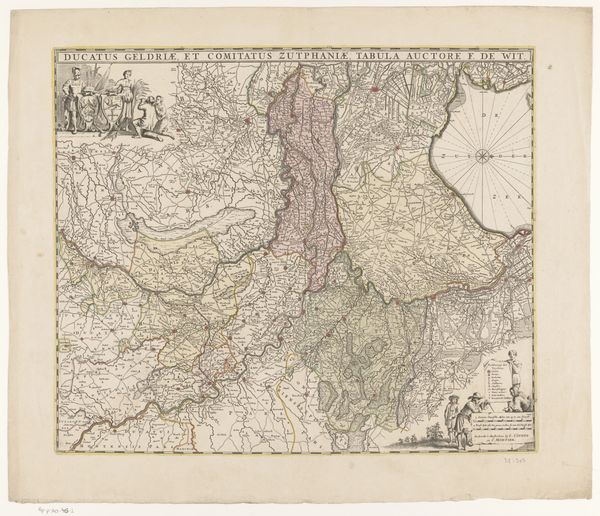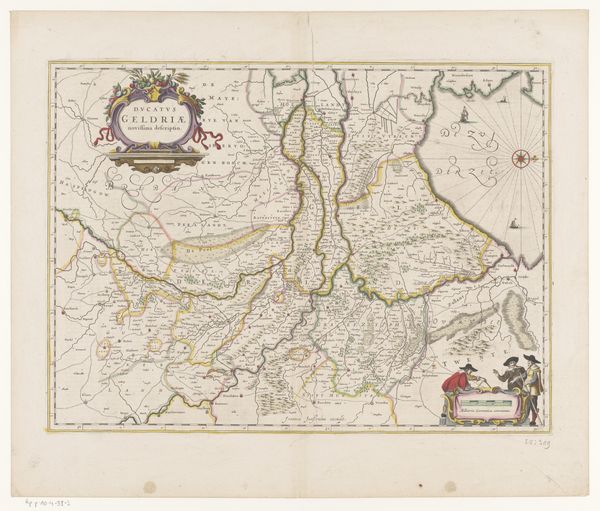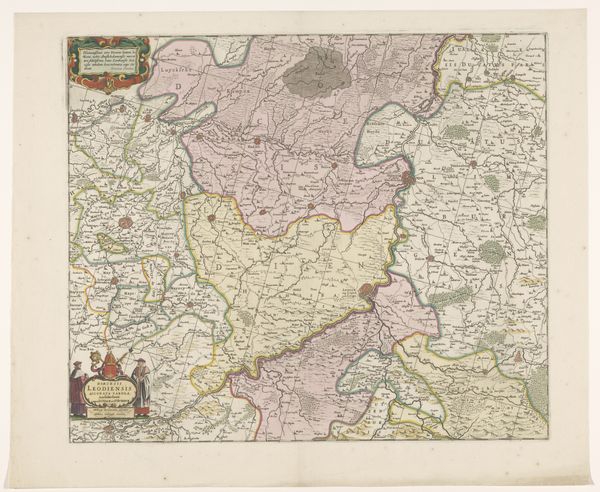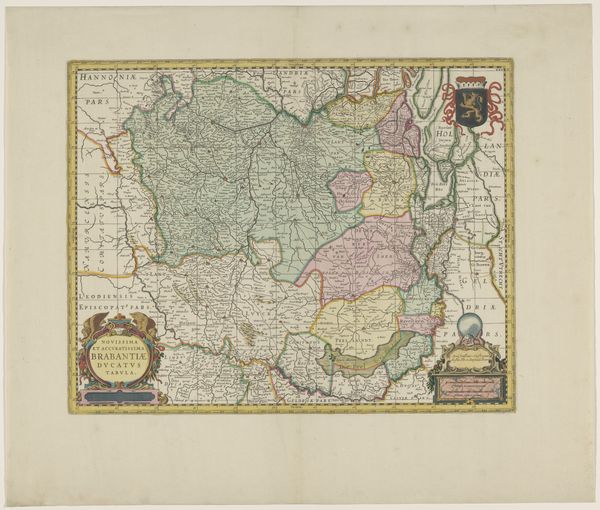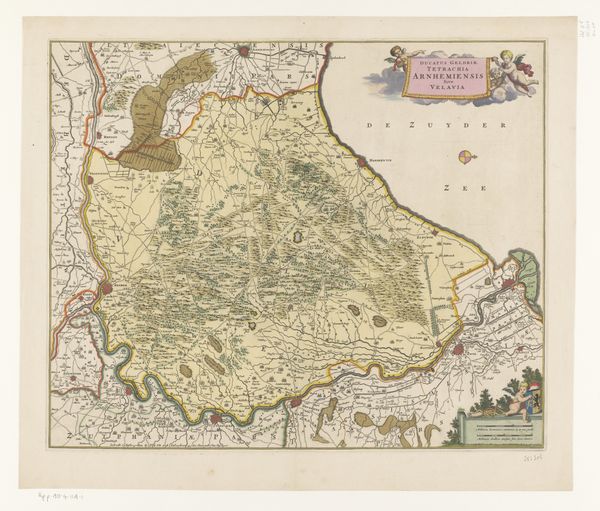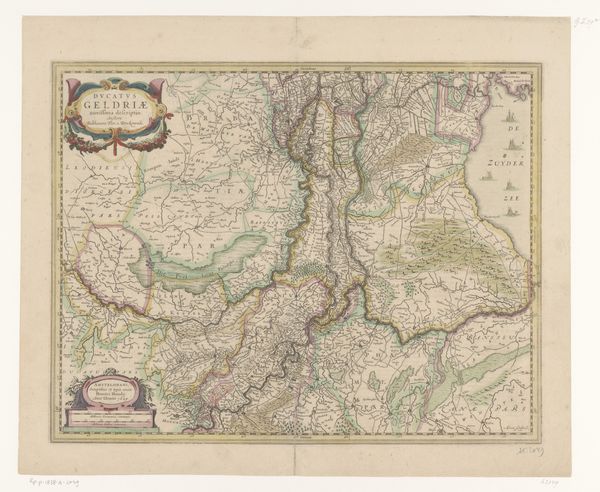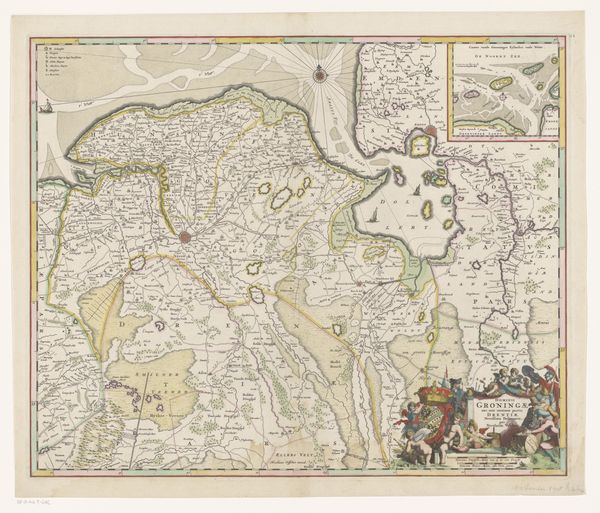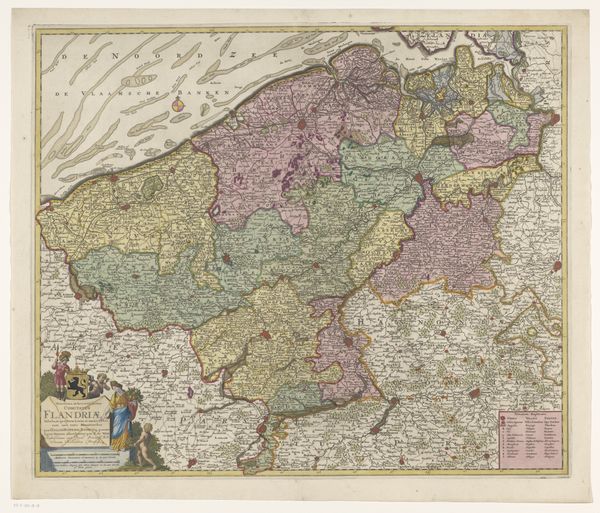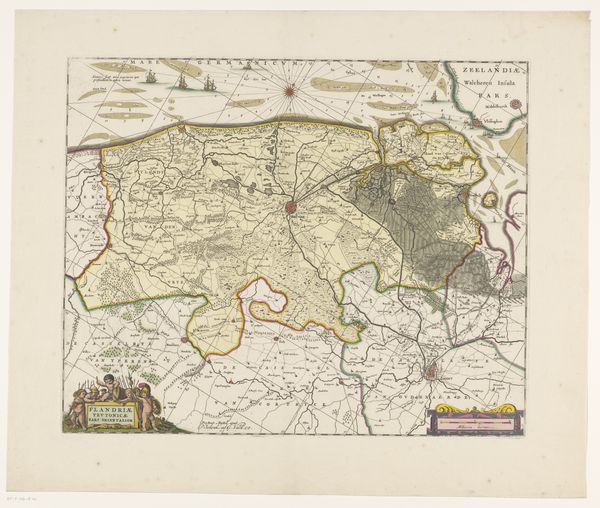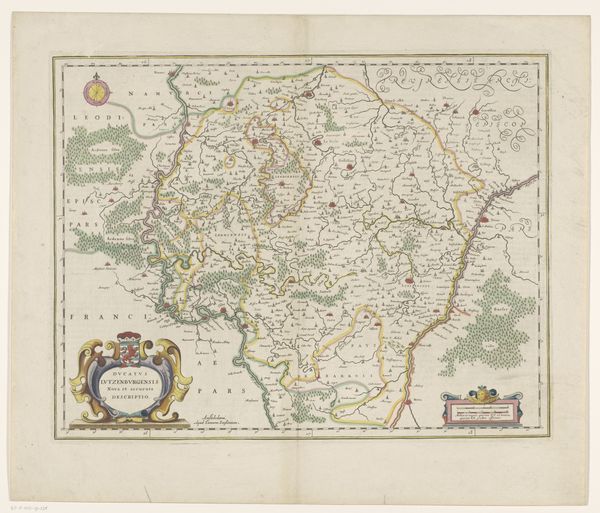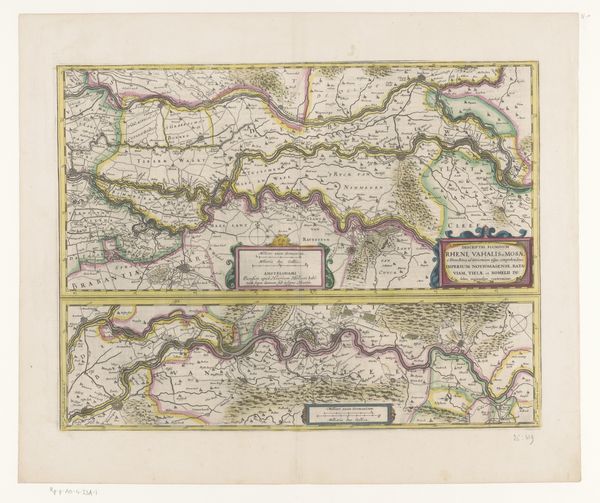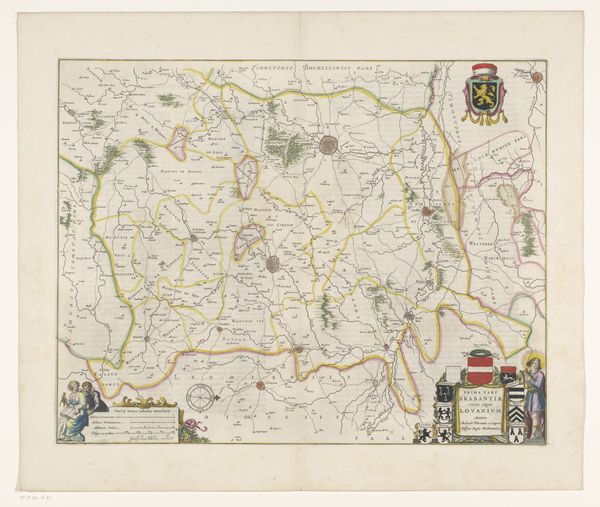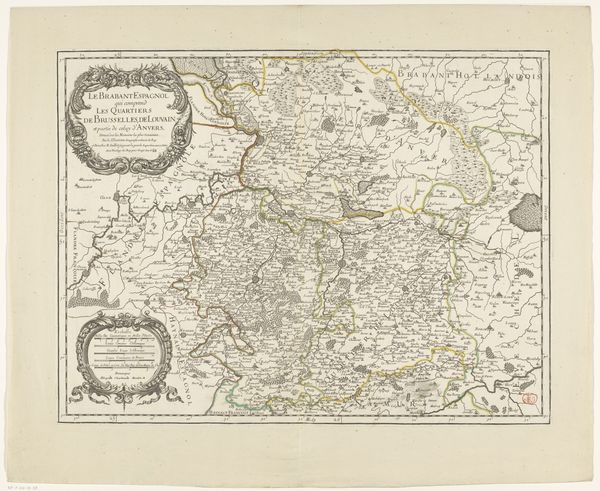
mixed-media, print, etching
#
mixed-media
#
baroque
# print
#
etching
#
landscape
Dimensions: height 465 mm, width 549 mm
Copyright: Rijks Museum: Open Domain
Abraham Jansz. Deur created this map of Gelderland, likely during the late 17th or early 18th century, employing ink and possibly watercolors. Dominating the composition are the heraldic symbols, which serve as potent emblems of regional identity and power. Observe the symbolic figures presenting an emblem. This gesture has roots in ancient Roman iconography, where offering gifts signified submission and allegiance. Consider its echo in Renaissance paintings of the Adoration, where kings present gifts to the infant Christ, a scene imbued with both reverence and worldly power. In medieval maps, these emblems asserted a region's sovereignty. Yet, even earlier, similar gestures appear in Egyptian hieroglyphs, depicting offerings to the gods. The map is not just a geographical tool; it's a statement, a layering of historical and cultural meanings. The cyclical recurrence of this symbol, evolving yet retaining echoes of its ancient origins, resonates deeply within our collective consciousness. It speaks to the enduring human impulse to define and assert our place in the world.
Comments
No comments
Be the first to comment and join the conversation on the ultimate creative platform.
